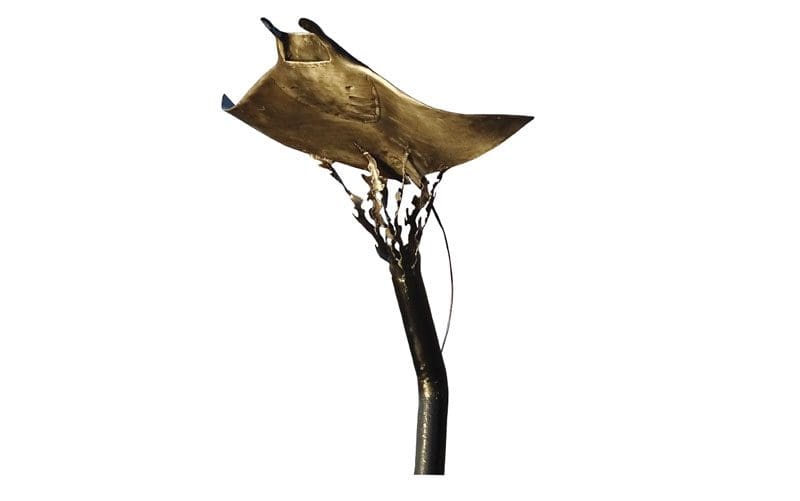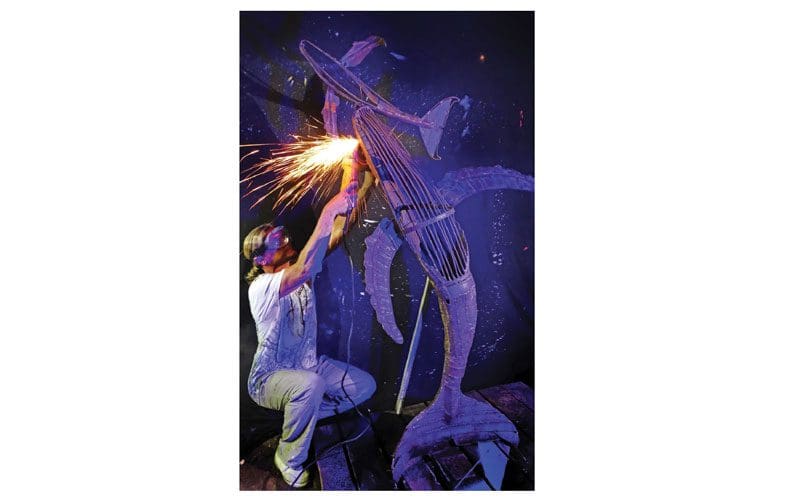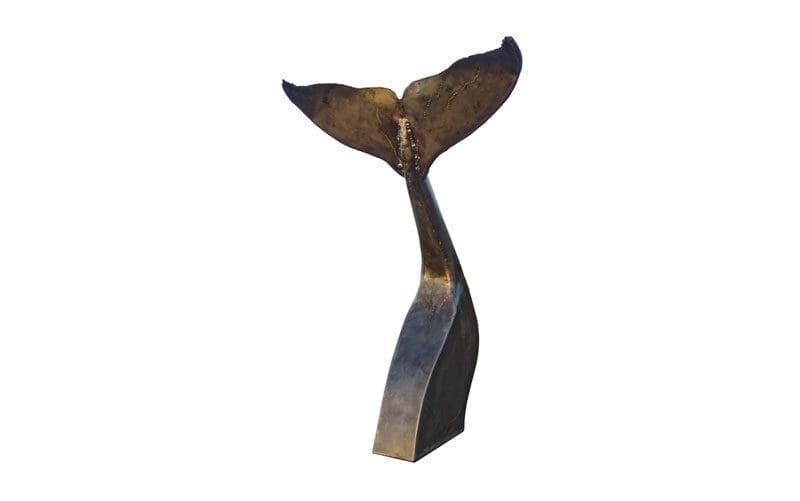Costa Rica Artist Spotlight: Carlos Hiller the Melding of Metal and the Sea
After more than two decades bringing to life oceans and their creatures on painted canvases, artist Carlos Hiller immersed himself in a new project without straying far from his marine environment. Perhaps influenced by so many hours on ships traveling to and from dive sites, Hiller’s captivation with seascapes has deepened on multi-dimensional levels. Aboard vessels whose essence is constantly being transformed by the elements of seawater and the weather, he became fascinated by the colors and textures of oxidation. From the chains connecting boats and their anchors to the hooks removed from the sea, the metal was always present.
“Metal has a conflictive relationship with the sea,” Carlos tells us. “We relate to it from a human perspective, but it acquires its own beauty by telling stories of countless waves. Metal does not fear the oxide.”

With a longstanding desire to create sculptures, Hiller explored many different materials. It quickly became clear that wood did not speak to him. He explains, “When I see a tree trunk it always seems perfect to me. The sculpture was already made by the same living being that is, or was, and so from my perspective, it needs nothing further.”
Thinking that stone might be the perfect medium for his endeavors, Carlos contemplated its potential by carrying out studies on pre-Columbian petroglyphs. But it was only through a happenstance opportunity to start playing with metals that he felt completely at ease as a sculptor. This discovery came as a result of a family gathering and discussions with relative Jonathan Luque, who is an expert in industrial welding. With Luque, the groundwork for Hiller’s dream took months of preparation.
‘Metal has a conflictive relationship with the sea.’
“When I first started shaping and creating my sculptures, it definitely required a negotiation with the metal,” he recalls. “Very noisy with twists, cuts, welds, more cuts, more blows, until the shape is found and we are copacetic. Then the metal understands and begins to travel the path we take together.”
With the sculptor and the metal both making concessions, Hiller’s vision shines through. When the piece is finished, he then decides if the piece calls for a protective finish or he purposefully chooses to let the oxide act, so it will eventually show the passage of time.
Working with marine themes, including ocean creatures and the texture of seawater, Hiller’s sculptures don’t necessarily attain the perfection seen in his studio paintings. Rather, they tell epic stories … those that divers see every day: a giant manta ray leaping over a rock, a whale rising and lovingly holding its newborn breathing for the first time or fish jumping and gliding at the water’s edge.

Forging black iron and stainless steel, Carlos Hiller seeks very particular results with his sculptures. Using both new and recycled materials with patinas of gold, silver and copper, the piece finally comes to fruition.
“Something that amazed me is the proximity of these sculptures with music,” Carlos observes. “The vast majority of the works are — without looking for it — practically musical instruments, to the point that I am including them for percussion in my presentations of live painting.”
Another happy discovery Hiller has found is the connection his pieces have with the force of gravity, seeking balance through principles of core, yoga and Pilates. He explains, “When the sculptures stand up for themselves, they feel like the son who finally manages to stand on his own … almost ready to go exploring the world, or in this case, the oceans.”
Carlos Hiller’s new creations can be viewed alongside his traditional and contemporary paintings at the Hidden Garden Art Gallery.
For more information visit:
www.HiddenGardenArt.com
or email info@HiddenGardenArt.com


